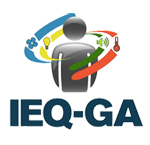First WHO/Europe Indoor Air Conference
In an esteemed gathering that underscored the urgency of addressing Indoor Environmental Quality (IEQ), two notable IEQ experts from the REHVA network graced the first WHO Europe Indoor Air Conference with their insightful presentations. Both experts, who were former partners among others in the EU-funded ALDREN and HealthVent projects, shared vital knowledge and perspectives that are indispensable in framing future policies and regulations.
Pawel Wargocki shared a mix of optimism and concern in his review of the conference. While acknowledging the event’s importance and the positive energy it generated, Wargocki expressed some concern that the Article 11a in the revision of EPBD motivating monitoring of IEQ in retrofitted buildings, may be significantly reduced or even removed. The WHO Conference showed clearly that is needed.
In his reflections, Wargocki underscored the need for clear accountability structures for maintaining good air quality in buildings. He advocated for governmental responsibility in ensuring air quality as a public good, expressing reservations about leaving it solely to citizens. Referencing a WHO document on “The right to healthy indoor air” published in 2000, Wargocki emphasized the crucial right of every citizen to healthy air that often gets overlooked.
Pawel also outlined the need for robust regulations at both national and EU levels, a comprehensive indoor air quality (IAQ) rating scheme (an example being the TAIL rating scheme developed by the ALDREN project), transparent and simplified ventilation standards supported by regulations regarding emissions from building products (source control), and empowered occupants who can improve air quality without bearing the brunt of responsibility. He also emphasized that prerogative for good indoor air quality is high outdoor air quality and encourage for common actions and consideration of “falling the walls” separating outdoor and indoor air and calling them one air. In a call to action, Wargocki urged for a paradigm shift from merely mitigating risks to actively promoting health through indoor air quality. As indoor air quality is non-visible he underscored the need for visualizing the quality of indoor air to building occupants as probably one of the top priority task in the near future.
Corinne Mandin emphasized the importance of the conference in keeping IAQ high on the agenda, especially as the world navigates through other pressing concerns like the COVID crisis, inflation, and fuel poverty. With significant policy developments occurring at the EU level, including a massive energy retrofit plan and updates to the EPBD, REACH regulation, and the ambient air directive, Corinne stressed that the focus on IAQ and healthy buildings must not waver.
Mandin highlighted that convincing policy makers remains a challenge, but iterated that solutions to improve IAQ are not only available but also mostly affordable. She joined the discourse on the concept of ‘public good,’ agreeing with Wargocki but also emphasizing that the responsibility for indoor air quality should be shared among governments, owners, occupants, and various stakeholders.
“In our collective pursuit of good IAQ,” Corinne said, “we are all actors—citizens, building professionals, material producers, policy makers, and more.”
To delve deeper into the insights shared the slides are available for download below:
Through their participations and invaluable contributions, Corinne and Pawel have indeed played a pivotal role in advancing the discourse on indoor environmental quality. The community looks forward to the synthesis of these discussions into actionable policies and measures that will not only safeguard but also enhance the health and wellbeing of building occupants across Europe.
